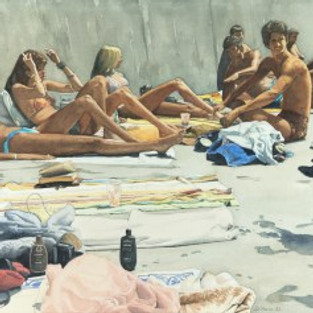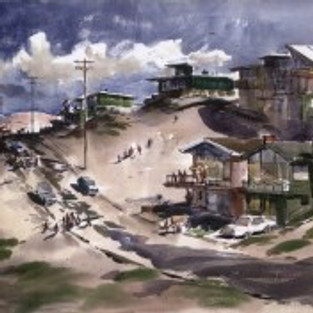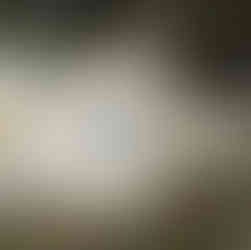In the Land of Sunshine: Imaging the California Coast Culture at PMCA
- artandcakela
- Feb 7, 2017
- 4 min read

Installation view, In the Land of Sunshine: Imaging the California Coast Culture, September 25, 2016-February 19, 2017, Pasadena Museum of California Art, photo © 2016 Don Milici
In the Land of Sunshine: Imaging the California Coast Culture
Pasadena Museum of California Art
By Shana Nys Dambrot
Through February 19th
Coastal landscapes have beguiled painters of the great outdoors since time immemorial, and inspiration has flourished along every achievable inch of land-meets-ocean across the planet’s centuries and continents. And the cliffs, sands, and rocky Pacific shores of California from the wild north to the epic central and the seductive south have been among the most passionately and eclectically portrayed of them all. The Pasadena Museum of California Art has a particularly long history of supporting the regional community of outdoor painters both contemporary and historical — but with In the Land of Sunshine: Imaging the California Coast Culture, the PMCA takes a more vertical approach to curating within the genre. Rather than focusing on an era, a generation, a region, or a medium, this exhibition uses coastal painting as the armature on which to assemble a collection that spans centuries, materials, and styles, from traditional to avant-garde, from the mid-19th century to 2016 — and in so doing achieves something that is as much a rich cultural diary and development chronicle as it is an important art historical archive.
With a broadly stated focus on “beach culture,” the assembled paintings trace both generationally successive and contemporaneously variable practices through some 90 oils, acrylics, and watercolors. As a survey it dispels any idea of a monolithic visual identity associated with the idea of beach culture, exploring a shared historical aesthetic that actually serves to highlight and parse the gamut of individual voices within its pursuit. With forays into artistic styles ranging from post-Impressionism to Photorealism and abstraction (and the very compelling struggle to merge them), Modernism, Conceptualism, and pop that reached into psychedelia — placing such diversity in this proximity demonstrates with deep emotional, optical, intellectual impact the degree to which artists develop their own languages even within shared affinities.
+-*
Exhibition highlights, surprises, and delights include some unlikely resonances; for example that between William Wray’s orange particulate atmospherics in his Wilmington Refinery from 2016 and Raymond Yellen’s 1884 view of the Golden Gate Bridge at that certain port wine magic hour. Likewise Bradford J. Salamon’s 2016 suburban family throws echoes of Standish Backus Jr.’s Goleta Beach watercolor from 1954, as well as of Dennis Hare’s 1982 watercolor The Cove (Monterey) — all three offering different moods and contexts for worlds of bespeckled off-ivory sand and concrete, with consciously posed figures occupying these brutalist idylls.
Phil Dike’s 1950’s frenetic schematics have a whiff of Dufy’s Mediterranean in the rosy palette and sketched-in trees, and a bit of Fauvism in the heavy brushstrokes’ own contours, building figures by purely applied pigment rather than with drawing. Dike was adept at rendering locales identifiable with minimal information, as well as at having scenes remain legible despite a hyperbolic amount of detail and mark-making. He had a knack for doing all of this at once in the same picture. Barse Miller’s Regatta at Balboa Island from the 1930’s constructs a stridently architectural foreground of white triangle sails, crowding out 80 percent of the image with this metonymical quasi-abstraction. For his era these were pretty radical, quirky, impulses.

Phil Dike, Pink House (Newport Beach), 1956. Oil on canvas, 24 x 34 inches. Dike Family Trust. In the Land of Sunshine: Imaging the California Coast Culture, September 25, 2016-February 19, 2017, Pasadena Museum of California Art.
Roger Kuntz worked very much in the spirit of Diebenkorn, his contemporary and like-minded aficionado of stark shadows, intersections of nature and architecture, strange optical phenomena, and extant, occurring instances of environmental abstraction. He too used overpainting as a way of drawing, so that grounds subtly rise up to embrace the objects that rest on them, and planes are gently disrupted according to the laws of pure abstraction deployed in the place of naturalism. From patches of sun on carpets to patterns of tennis nets on clay, he was on the lookout for opportunities to create certain effects, to generate wavering lines and textured color fields. These paintings are among the strongest in a very strong show; they are timelessly fresh, perennially engaging works which might well have been made in the last few months rather than half a century ago.
Art Riley’s breezy, gestural view of 1960’s Playa del Rey hearkens back to pre-development dunes, wispy, unformed, like the place itself at that time, you can almost hear the gulls behind you. Right around the same time, other surf-town painters like John Severson and Rex Brandt were working out more extreme modes of abstraction — but in their cases, ideating a more jaunty, jazzy, colorful facture and exotic, cheeky stylization. Severson prefigures Shag a bit, while Brandt prefigures Fischl. But by ten years later, it was all about Rick Griffin and the dark mysticism of rebellious rock-infused counterculture adjacent to the freckled, innocent mythology of the era. After that, well, we know how the rest of the story turned out. We need only walk out into the relentless sunshine to see for ourselves. If we can find parking near the beach, that is.
#losangeles #abstraction #california #losangelesartist #JohnSeverson #art #painting #PMCA #pasadena #coastallandscape #pop #losangelesart #contemporaryart #coast #southerncalifornia #LosAngelesArtists #acrylicpainting #BarseMiller #modernism #oilpainting #conceptualism #WilliamWray #artgallery #StandishBackusJr #culture #diversity #gallery #DennisHare #surf #sunshine #RexBrandt #psychedelia #museum #shananysdambrot #PasadenaMuseumofCaliforniaArt #artandcake #pacific #artexhibition #lanscape #PhilDike #ArtandCakeLA #fineart #photorealism #beachculture #artists #artist #IntheLandofSunshine #arts #artexhibit #coastculture #ArtandCulture #exhibition #RaymondYellen #Dufy #RogerKuntz #exhibit #watercolors #ArtRiley #beach #losangelesgallery #RickGriffin #BradfordJsalamon














































